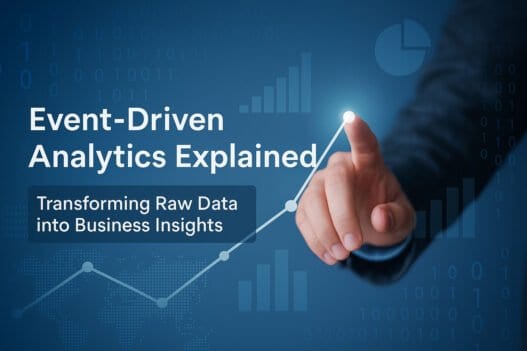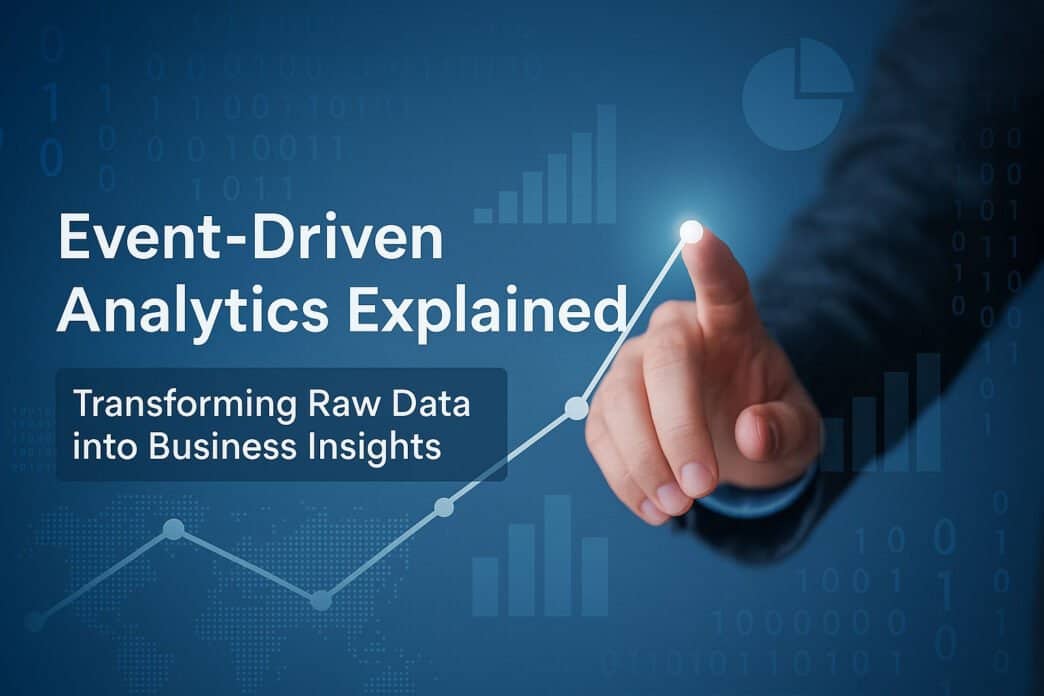Table of contents
Why Event-Driven Analytics?
Traditional tools like Universal Analytics (the older version of Google Analytics) relied heavily on sessions and pageviews to understand user behavior. While this worked well in the early web era, it no longer fits how people use digital platforms today.
Event-driven analytics flips the model—focusing on raw, timestamped records of user actions, giving businesses more flexibility and power in analysis. Instead of viewing user sessions as monolithic blocks, you analyze what users actually do across platforms and devices.
“Events have always been around. We’ve just not used them this way before.”
How Google Analytics 4 Embraces Events
Google Analytics 4 (GA4) is built from the ground up to be event-based. Unlike Universal Analytics, which uses a rigid hierarchy of session > pageview > event, GA4 treats every interaction as an event—pageviews included.
This allows GA4 to:
- Capture richer, more granular data
- Easily track cross-platform (web + app) behavior
- Handle asynchronous and non-linear user journeys
- Store event data directly in BigQuery for deep analysis
“GA4 gives you access to the raw event stream, making your analytics setup more flexible and future-proof.”
The Anatomy of an Event
Every event has four core components:
- Action: What happened (e.g., form submitted)
- Properties: Metadata or context (e.g., page URL, form name)
- Actor: Who performed the action (user ID, client ID, or even a company)
- Time: When it happened (timestamps are critical for sequencing and filtering)
A well-structured event isn’t just technically accurate—it’s usable for real-world business questions.
Best Practices for Event Design
- Name Smartly: Use consistent patterns like
object + action(e.g.,order_purchased). Past tense is preferred. - Collect Wisely: Capture useful metadata like form IDs, device info, or browser settings.
- Avoid Over-Specificity: Instead of
form_submitted_demo, use a general event name with properties likeform_type: demo.
“Naming is how people discover your data. Be consistent.”
Tools and Infrastructure
- Data Collection: Google Tag Manager, Segment
- Event Analysis: Google Analytics 4 (App+Web), Amplitude, Mixpanel
- Data Warehousing: BigQuery, Snowflake
- Modeling & ETL: DBT, Airflow
These tools allow you to build pipelines that connect front-end activity to back-end outcomes.
From Events to Insights
Event data allows for:
- Full-funnel analysis
- Time-to-purchase or churn modeling
- Personalization and recommendation systems
- Attribution modeling across multiple touchpoints
- Debugging UX issues with metadata like screen resolution or browser
And perhaps most importantly: the ability to revisit and reprocess historical data as your questions evolve.
Key Advantages Over Legacy Analytics
- No more rigid session dependency: Sessions still exist in GA4, but they’re no longer the backbone.
- Cross-device tracking: Events can be tied to users across web and mobile.
- Enhanced flexibility: No predefined category/action/label limitations.
- Real-time debugging: Tools like the GA4 DebugView allow event validation during setup.
- Future-proofing: Data pipelines can be extended, exported, and re-analyzed in BigQuery.
“You can summarize events into reports, but you can’t break reports back into events.”
Tips for Getting Started
- Start with the use case. Define what decisions the data should drive.
- Think long-term. Structure your data to be extensible and future-proof.
- Document everything. Use spreadsheets to define event names, properties, and triggers.
- Align teams early. Work with stakeholders to define meaningful, reusable events.
Final Thoughts
Hussain emphasized that while event-driven analytics can seem complex, the benefits are worth it. With proper planning, consistent naming, and clear use cases, even small teams can leverage powerful insights.
“You can summarize events into reports, but you can’t break reports back into events.”
As the ecosystem matures, those who master event design will have the clearest window into customer behavior.




















